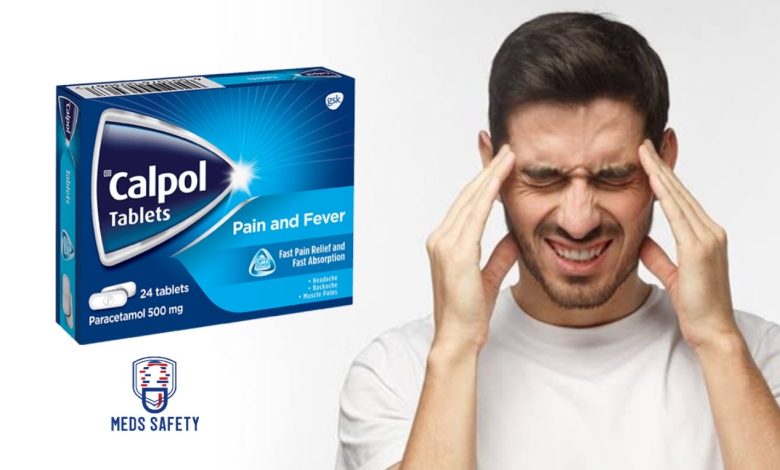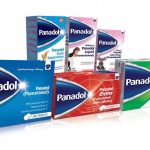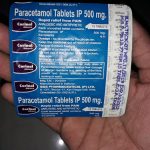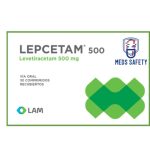Calpol Tablets: Uses, Dosage, Side Effects, Interactions

Calpol Tablets is a brand of Paracetamol commonly used to relieve mild to moderate pain in conditions such as headaches, toothaches, muscle aches, joint pain, and pain associated with colds and flu.
Calpol tablets can help reduce fever associated with various illnesses, including colds, flu, and other infections. Calpol Tablets is typically intended for adult use and may not be suitable for children unless specifically directed by a healthcare professional.
How it works
Calpol tablets, like other formulations containing paracetamol (also known as acetaminophen), work as an analgesic (pain reliever) and antipyretic (fever reducer). The exact mechanism of how paracetamol works is not fully understood, but it is believed to involve several actions in the body.
Paracetamol is thought to inhibit the synthesis of prostaglandins, which are chemical messengers that promote inflammation and sensitize nerve endings to pain. By reducing prostaglandin production, paracetamol helps to alleviate pain.
Paracetamol may act on the hypothalamus, the part of the brain responsible for regulating body temperature. It is believed to inhibit the production of prostaglandins in the hypothalamus, which can help lower elevated body temperature during a fever.
Dosage of Calpol Tablets
The recommended dosage of Calpol Tablets can vary depending on factors such as age, weight, and the individual’s specific needs. It’s important to follow the instructions provided by the manufacturer or consult with a healthcare professional for the most accurate and appropriate dosage for your specific situation. However, here is a general guideline for the recommended dosage of Calpol Tablets for adults and children over 12 years of age:
- Adults and children over 12 years: The usual dosage for Calpol Tablets is 1 to 2 tablets (500mg to 1000mg) taken every 4 to 6 hours, as needed. Do not exceed 4,000mg (4g) of paracetamol in a 24-hour period.
It’s important to adhere to the recommended dosage and not exceed the maximum daily limit to avoid potential side effects or overdose. Remember that this is a general guideline, and individual circumstances may vary. For specific dosing instructions, it is best to consult with a healthcare professional or refer to the packaging instructions and labeling of the Calpol Tablets you have.
Is calpol tablet same as Panadol?
No, Calpol tablets and Panadol tablets are different brand names for medications that contain the same active ingredient, paracetamol (also known as acetaminophen). Both Calpol and Panadol are commonly used to relieve pain and reduce fever. The main difference between the two lies in the branding and the specific formulations available under each brand.
Calpol is a brand that is typically associated with products for children. Calpol formulations are designed with flavors and dosages appropriate for infants and children, making it easier for them to consume. Calpol is available in various forms, including liquid suspensions, syrups, and melt-in-the-mouth tablets.
Panadol, on the other hand, is a brand that offers a wider range of products for people of different age groups. Panadol includes formulations for both children and adults, catering to various needs and preferences. Panadol is available in different forms, including tablets, caplets, liquid suspensions, and effervescent tablets.
Despite the branding differences, both Calpol and Panadol contain the same active ingredient and work in a similar way to relieve pain and reduce fever. It’s important to follow the recommended dosage instructions and consult with a healthcare professional or refer to the package labeling for appropriate use and dosage information for the specific product you are using.
Calpol Tablets Side Effects
Calpol tablets, are generally considered safe when used as directed. However, like any medication, they may have potential side effects. It’s important to be aware of these potential side effects, although not everyone experiences them. Common side effects of paracetamol can include:
1. Nausea and vomiting: Some individuals may experience stomach discomfort, nausea, or vomiting after taking paracetamol tablets. Taking the medication with food or milk can help reduce these side effects.
2. Allergic reactions: In rare cases, an allergic reaction to paracetamol can occur. Symptoms may include skin rash, itching, swelling, dizziness, or difficulty breathing. Seek immediate medical attention if you experience any signs of an allergic reaction.
3. Liver damage: While paracetamol is generally safe when used appropriately, taking very high doses or prolonged use beyond the recommended limits can potentially lead to liver damage. It is important not to exceed the maximum daily dosage and to avoid combining paracetamol with other medications that also contain paracetamol.
It’s important to consult with a healthcare professional or pharmacist if you have any concerns about the potential side effects of Calpol tablets or if you experience any unusual or severe symptoms after taking the medication. They can provide you with personalized advice and guidance based on your specific circumstances.
Calpol Tablets drug interaction
Calpol tablets contain the active ingredient paracetamol. While paracetamol is generally considered safe, it’s important to be aware of potential drug interactions. Drug interactions can occur when two or more medications, including over-the-counter drugs, prescription medications, or herbal supplements, interact with each other, potentially altering their effects or increasing the risk of side effects. Here are a few important points to consider regarding drug interactions with Calpol tablets:
1. Other Medications Containing Paracetamol: It is crucial to avoid taking multiple medications that contain paracetamol simultaneously. Combining multiple paracetamol-containing products can increase the risk of exceeding the recommended maximum daily dose and potentially lead to liver damage. Always check the labels of other medications you are taking to ensure they do not contain paracetamol.
2. Warfarin and Blood Thinners: Paracetamol can interact with certain blood thinning medications like warfarin, potentially increasing the risk of bleeding. If you are taking any blood thinners, it’s important to consult with a healthcare professional before taking Calpol tablets or any other medications containing paracetamol.
3. Medications Metabolized by the Liver: Paracetamol is primarily metabolized by the liver. Certain medications that are also metabolized by the liver, such as certain antibiotics, antiepileptic drugs, and antiviral medications, may interact with paracetamol. These interactions can affect the metabolism or effectiveness of both medications. It’s advisable to consult with a healthcare professional if you are taking any liver-metabolized medications.
It’s important to inform your healthcare professional about all the medications, supplements, or herbal products you are taking before using Calpol tablets or any other medications. They can provide personalized advice regarding potential drug interactions and help ensure the safe and effective use of medications.
Can take Calpol tablets and alcohol?
No, it is generally not recommended to consume alcohol while taking any medication, including Calpol tablets. Both alcohol and paracetamol (the active ingredient in Calpol tablets) can have an impact on the liver. Combining the two may increase the risk of liver damage or other adverse effects.
Alcohol consumption can also impair judgment and decision-making, which may affect your ability to properly adhere to the recommended dosage and usage instructions for Calpol tablets.
It’s always best to follow the instructions provided by the manufacturer or consult with a healthcare professional regarding the safe use of Calpol tablets. If you have any concerns or questions about consuming alcohol while taking medication, it’s advisable to consult with a healthcare professional for personalized advice based on your specific situation.





